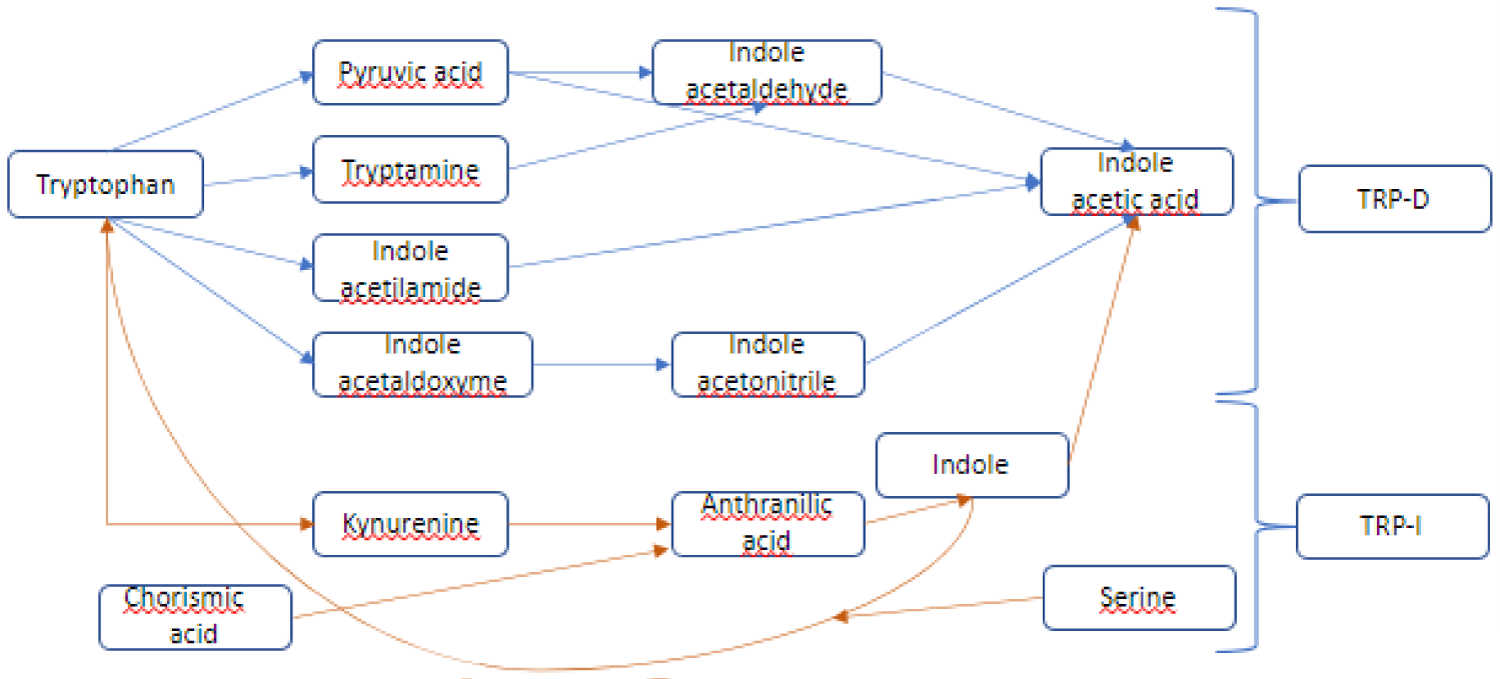More Information
Submitted: November 09, 2022 | Approved: November 16, 2022 | Published: November 17, 2022
How to cite this article: Hernández-Mendoza JL. The Indole acetic acid in bacteria, fungi and plants. J Plant Sci Phytopathol. 2022; 6: 161-162.
DOI: 10.29328/journal.jpsp.1001091
Copyright License: © 2022 Hernández-Mendoza JL. This is an open access article distributed under the Creative Commons Attribution License, which permits unrestricted use, distribution, and reproduction in any medium, provided the original work is properly cited.
The Indole acetic acid in bacteria, fungi and plants
Hernández-Mendoza JL**
National Polytechnic Institute, Genomic Biotechnology Center, Experimental Biotechnology Lab, Blvd del Maestro s/n esq. Elias Piña, Col Narciso Mendoza 88710 Reynosa, Tamaulipas, Mexico
*Address for Correspondence: Hernández-Mendoza JL, National Polytechnic Institute, Genomic Biotechnology Center, Experimental Biotechnology Lab, Blvd del Maestro s/n esq. Elias Piña, Col Narciso Mendoza 88710 Reynosa, Tamaulipas, Mexico, Email: jhernandezm@ipn.mx
Indole acetic acid (AIA) is the most important plant growth hormone since it intervenes in the mechanisms of cell growth and differentiation and is produced mostly in the meristematic zones of the plant for apical dominance or root growth. AIA is also produced in root nodules and plant galls. In the latter cases, its presence is associated with endophytic bacteria. Although it is a plant growth hormone, it is also produced by bacteria such as Azospirillum brasilense and Bradyrhizobium japonicum. These species live in the soil (rhizosphere) or can colonize the roots (endophytic) of their hosts. From these bacteria, there are also isolates that are nitrogen fixers, which in addition to providing growth factors to plants, contribute by releasing nitrogenous molecules that improve plant nutrition.
Several species of fungi, such as Trichoderma spp (T asperellum, T koningiopsis and T harzianum) that have a type of beneficial association in plants and others considered phytopathogenic, causing great losses in crops throughout the world, such as Fusarium oxysporum and Macrophomina phaseolina and others also produce AIA as part of their metabolism.
In general, an analysis of the AIA synthesis pathways used by plants, bacteria, and fungi is the same. A route whose precursor is the amino acid tryptophan, so it is called Tryptophan-Dependent (TRP-D) and consists of 4 pathways of synthesis of AIA. Namely, these are pyruvic Indole acid (Pyr), Tryptamine (TRM), Indole acetamide (IAM) and the Indole acetonitrile (IAN) pathway. This last pathway is of vital importance since when metabolizing the IAN by the action of nitrogenase enzymes this compound is transformed into AIA and as a product of this transformation a nitrogenous molecule is released giving rise to the biological fixation of nitrogen.
The other route of synthesis of AIA is called Tryptophan Independent (TRP-I) and in this case, the precursor is Chorismic acid (Cor) which in turn comes from shikimic acid (Sik). The chorismic is transformed into anthranilic acid (Ant) with which it is integrated into the AIA synthesis pathway. This is a long pathway and about 12 different enzymes are involved in the generation of AIA. An interesting point in this pathway is that with the generation of Indol (Ind) opens the possibility of metabolizing to AIA, or when a serine molecule is added, TRP is produced. Now, from the TRP itself, using an alternative route, that of kynurenine (Kyn) anthranilic acid can be elaborated again, with this there is the possibility of synthesis of AIA again.
The Figure 1 shows the possible routes and pathways for the synthesis of AIA in plants, bacteria, and fungi, although each organism may have particularities in them. For example, some strains of A brasilense do not have the enzymes necessary to complete the AIA synthesis pathway through kynurenine. On the contrary, in the case of T asperellum and T koningiopsis, this pathway is possible by the presence of the genes that regulate these transformations. However, the Trichoderma species that have been analyzed in our laboratory show that the Indole pyruvate pathway is not found in these fungi and is the most evident pathway in the interaction of these fungi with corn. Finally, the pathways can be present in different organisms and the product, acetic Indole acid is the same although the genes and pathways that intervened it are different.
Figure 1:
Funding information
I hereby declare that this piece of work was fully funded by SIP-IPN (Secretaria de Investigacion y Posgrado del Instituto Politecnico Nacional) with grant number: < 20190016; 20200633; 20211172.
